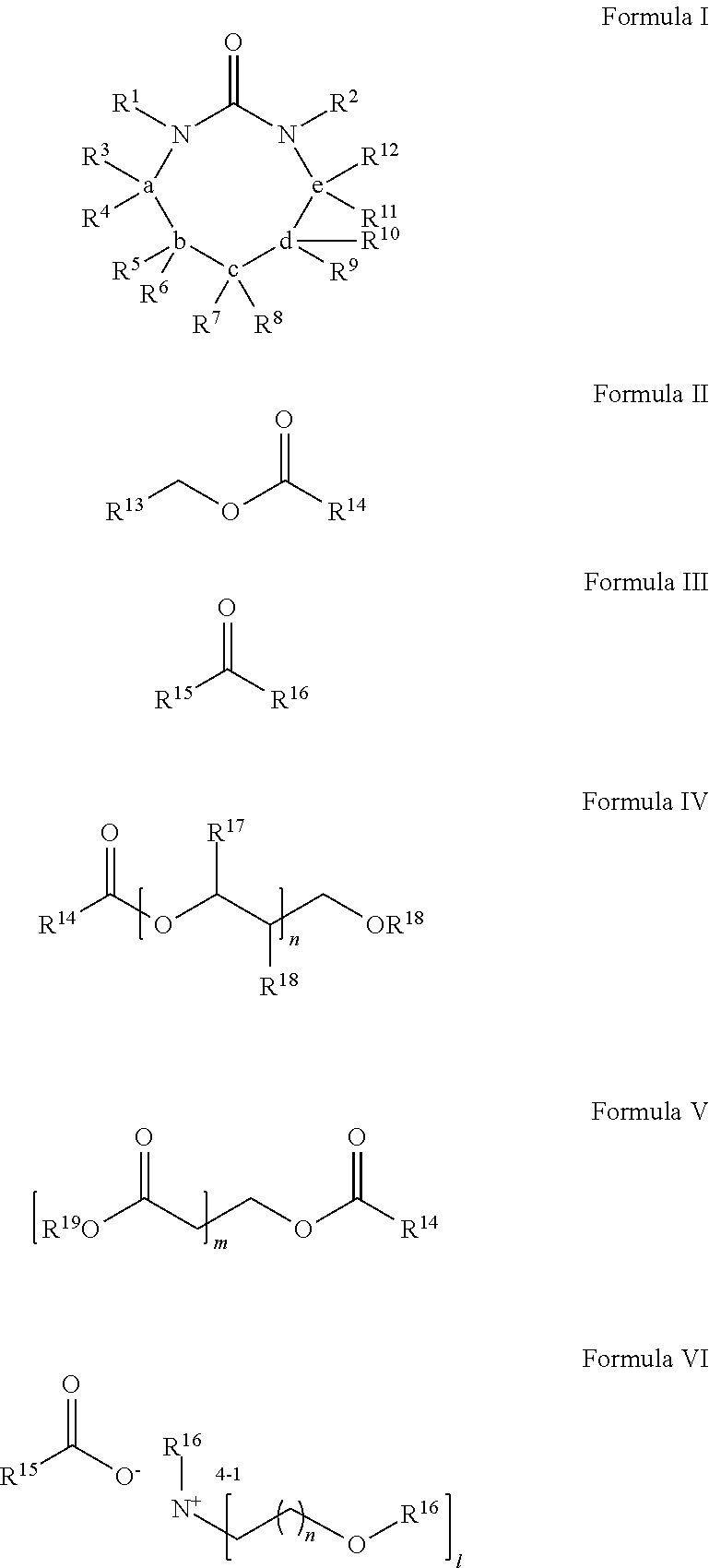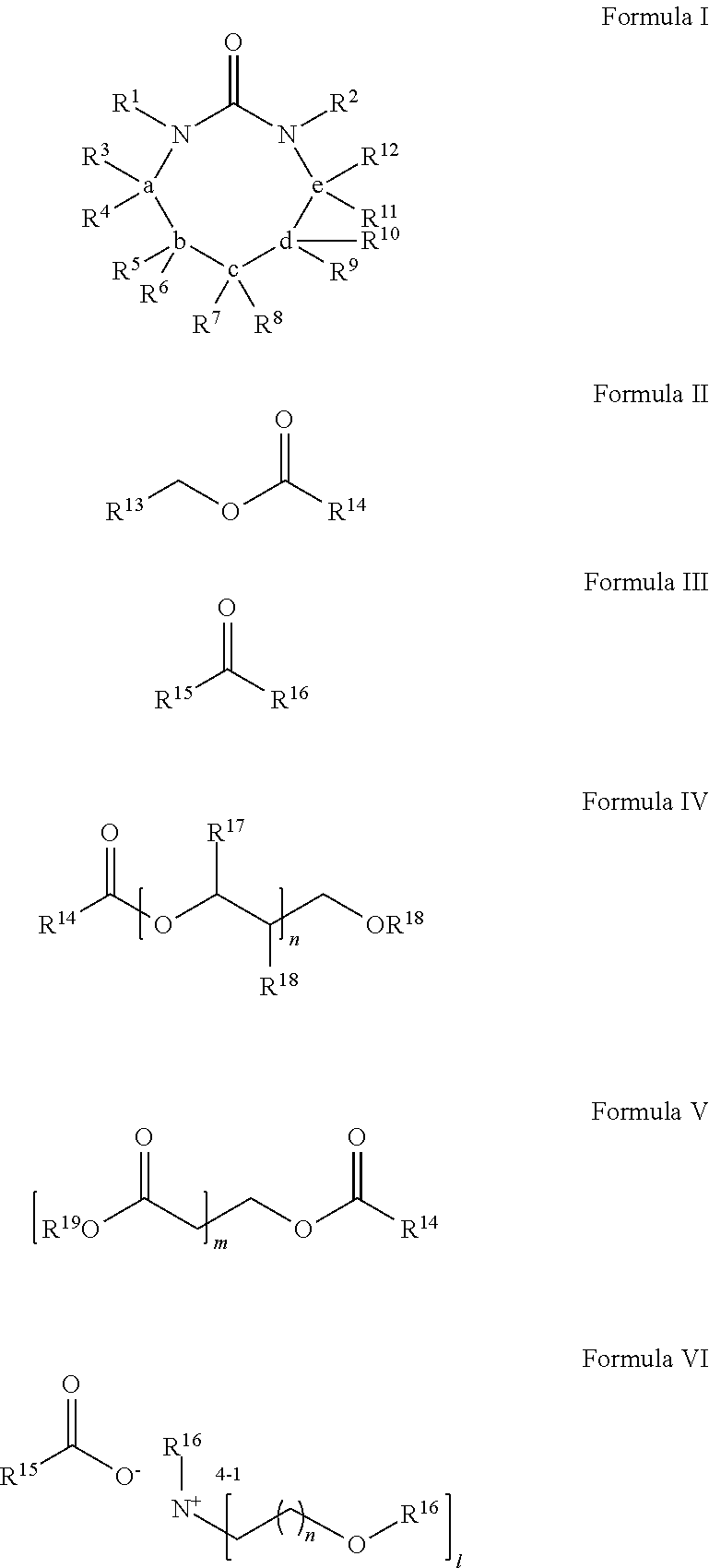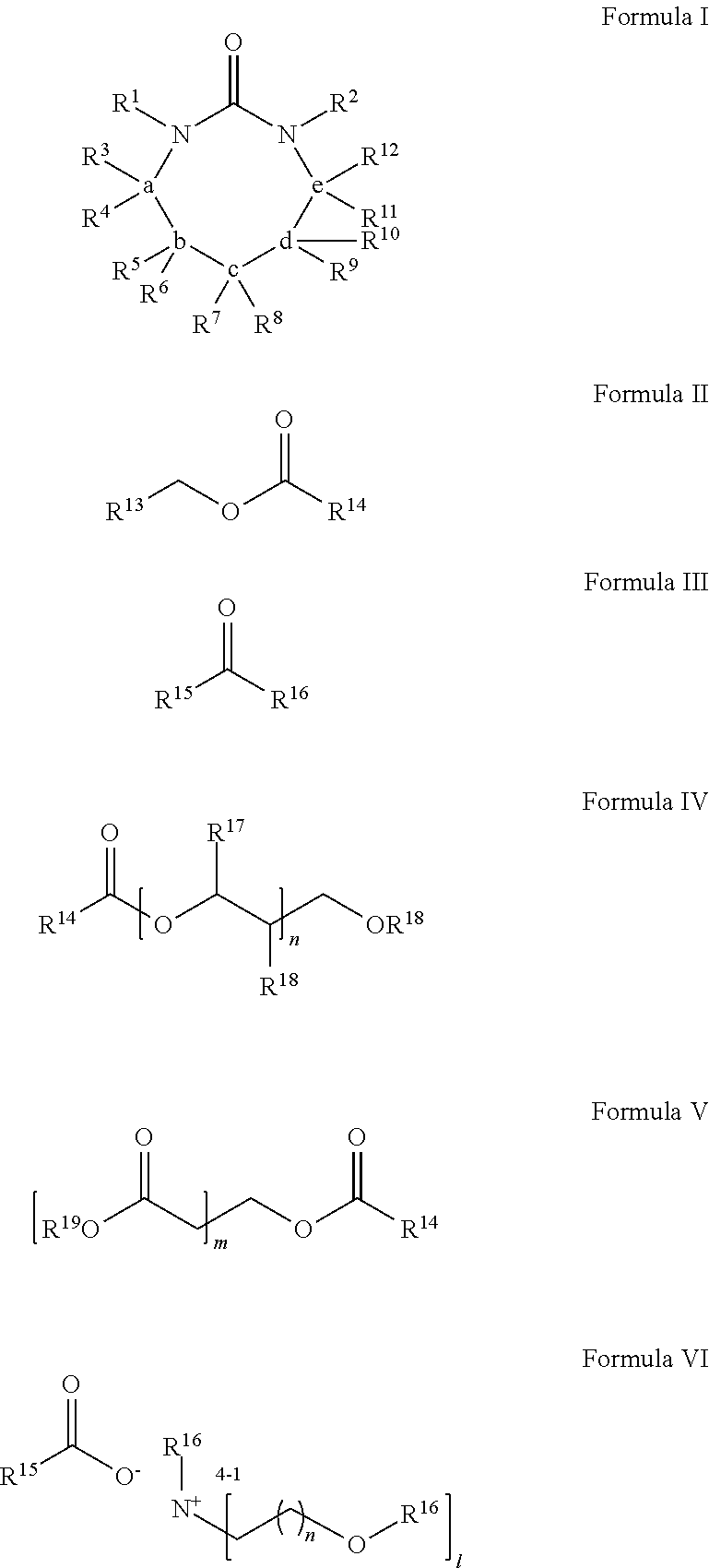Process for Extracting Polyester from an Article
a technology of article and polyester, which is applied in the field of process for extracting polyester from an article, can solve the problems of high energy consumption, harsh chemical agents, and energy-intensive breakdown of most synthetic polyesters, and achieve the effects of easy handling, low toxicity and cost of synthesis, and excellent solubility of polyester
- Summary
- Abstract
- Description
- Claims
- Application Information
AI Technical Summary
Benefits of technology
Problems solved by technology
Method used
Image
Examples
example 1
[0037]Poly(ethylene terephthalate) (PET) (Sigma-Aldrich, >99%, 3.0 g) was added to 40 mL of 1,3-dimethylimidazolidinone (DMI) (Sigma-Aldrich, >98%) in a 250 mL glass beaker on a hotplate held at 80° C. The mixture was heated to 95° C. for 2 hours, after which it was removed from the heat and hot filtered to yield 0.26 g of undissolved solid. The hot solution began to gelatinize at approximately 50° C. and after cooling to room temperature gradually separated into a liquid phase and a solid gelatinous phase. The phases were separated by conventional filtration and the filter cake was washed with 25 mL acetone followed by three washes each of 25 mL deionized water. The resultant damp white solid (4.2 g) was collected, transferred to a vacuum desiccator over silica gel and dried to constant weight to yield 2.42 g (81% yield) of a powdery white solid whose infra-red spectrum correlated with that of virgin poly(ethylene terephthalate).
example 2
[0038]A sample of a white polyester shirt (17.75 g) was cut into 1 cm2 squares and added to 80 mL of 1,3-dimethylimidazolidinone (DMI) in a 500 mL glass beaker on a hotplate held at 80° C. The mixture was heated to 95° C. with occasional stirring to prevent localized decomposition of polymer at surface “hot spots”. After 1 hour, the mixture was removed from the heat and hot filtered to yield 4.3 g of undissolved solid. The hot solution began to gelatinize at approximately 50° C. and after cooling to room temperature gradually separated into a liquid phase and a solid gelatinous phase. The phases were separated by conventional filtration and the filter cake was washed with 25 mL acetone followed by three washes each of 25 mL deionized water. The resultant damp white solid (17.59 g) was collected, transferred to a vacuum desiccator over silica gel and dried to constant weight to 13.1 g (74% yield) of a powdery white solid whose infra-red spectrum correlated with that of virgin poly(et...
example 4
Dissolution of PET in Butyl Benzoate
[0041]To 200 mL butyl benzoate at 100° C. was added, with stirring, 25 g shredded textile (60wt. % poly(ethylene terephthalate), 40 wt. % cotton). The mixture was stirred with heating for 2 hours. At the conclusion of this period, solid material was filtered off and the hot filtrate was collected and cooled to room temperature, whereupon a quantity of white solid precipitate formed. The filtrate was diluted with 200 mL isopropyl alcohol and filtered using a Buchner funnel. The resultant white solid was washed with a further 100 mL isopropyl alcohol followed by 200 mL deionized water and dried to constant weight in a vacuum desiccator to yield 4 g (26% yield) of crystalline powdery solid, mp 253-256° C.
PUM
| Property | Measurement | Unit |
|---|---|---|
| temperature | aaaaa | aaaaa |
| period of time | aaaaa | aaaaa |
| temperature | aaaaa | aaaaa |
Abstract
Description
Claims
Application Information
 Login to View More
Login to View More - R&D
- Intellectual Property
- Life Sciences
- Materials
- Tech Scout
- Unparalleled Data Quality
- Higher Quality Content
- 60% Fewer Hallucinations
Browse by: Latest US Patents, China's latest patents, Technical Efficacy Thesaurus, Application Domain, Technology Topic, Popular Technical Reports.
© 2025 PatSnap. All rights reserved.Legal|Privacy policy|Modern Slavery Act Transparency Statement|Sitemap|About US| Contact US: help@patsnap.com



